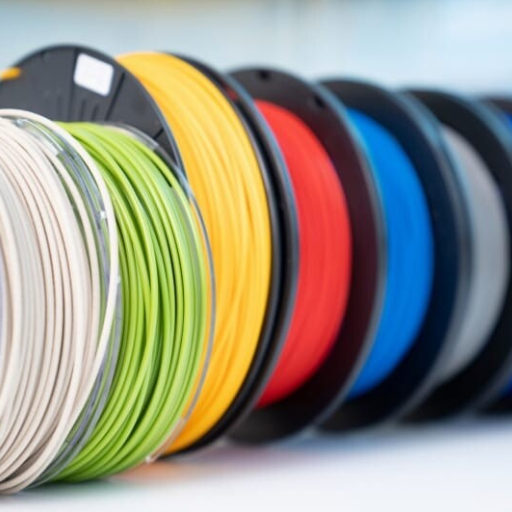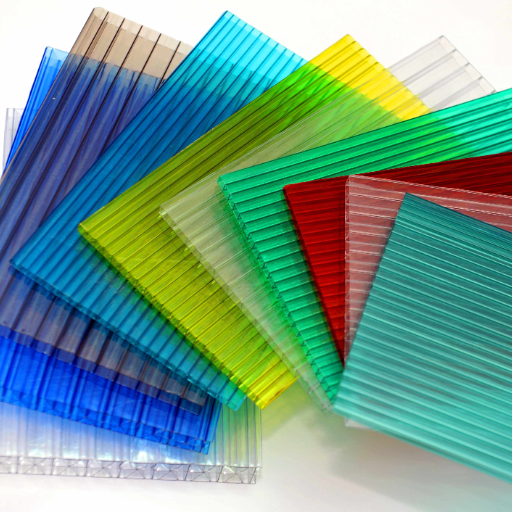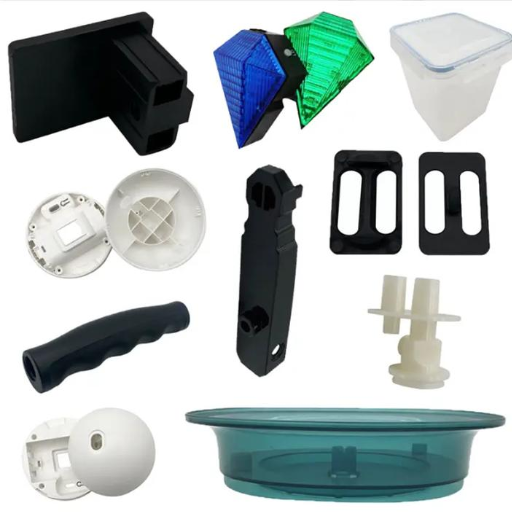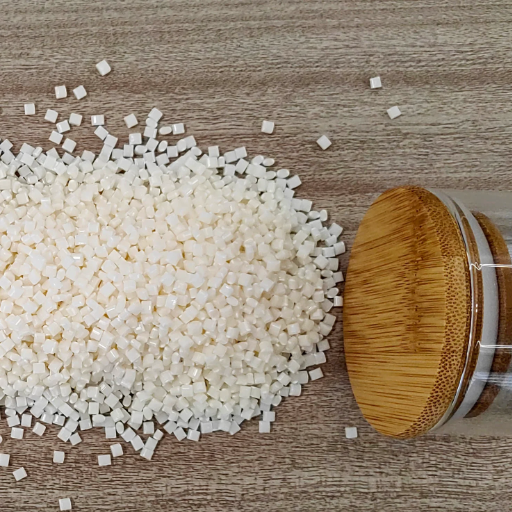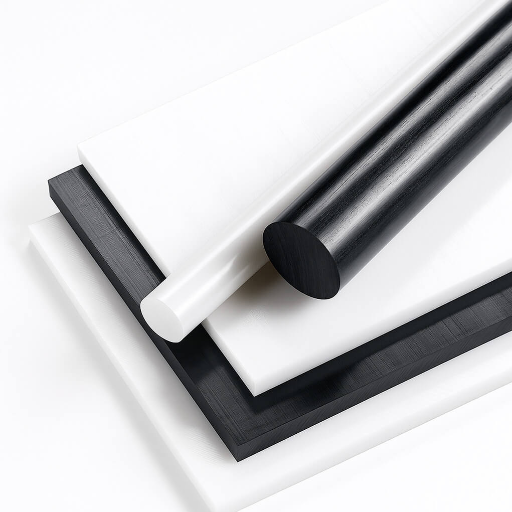Choosing the most suitable 3D printer filaments, which are those best suited to your project, is one of the key differences that three-dimensional printing requires to add value. Among many, the most common are PLA and Nylon filaments due to their unique features and applications. But then there is this baffling question: how do you determine which of these fine materials will be the best gun for your specific needs? Therefore, this write-up has been developed to delve deeply into the distinct variables between PLA and Nylon, touching on some of the most salient areas in terms of difference, including the advantages and disadvantages. Be it convenience in handling, resistance, or certain technical specifications. All this information helps you in making choices. Let’s explore the real-life and performance possibilities of these two materials – PLA and Nylon – for better application of each in 3D printing.
Introduction to PLA and Nylon
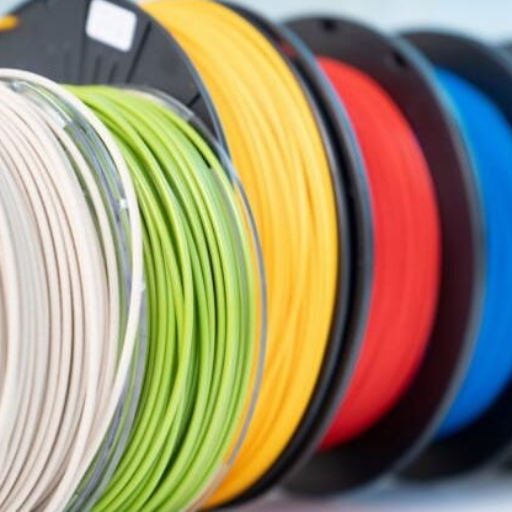
Nylon and PLA are the two most commonly used materials in 3D printing; each has distinct advantages depending on the application. Being a PLA, it is a biodegradable thermoplastic made from renewable resources like cornstarch or sugar. It is easy to use and can be printed at low temperatures with great dimensional accuracy, thus versatile for beginners or projects demanding excellent aesthetic visual features. It is limited in its use due to being less durable and not resistant to heat; hence, it finds few functional applications that require higher mechanical strengths.
Nylon, however, as a synthetic polymer, excels in functional prototypes, mechanical parts, and other components that require long-term durability. It has high tensile strength and is a little flexible with wear and impact resistance. It presents challenges to printing due to its high extrusion temperature and hygroscopic nature and, therefore, requires proper storage and preparation for optimal use. The choice between PLA and Nylon depends as much on the printing criteria needed as on long-term use or strength criteria demanded from the project.
What is PLA?
Polylactic Acid (PLA) is a biodegradable thermoplastic derived from renewable resources such as corn starch or sugarcane. Being one of the easiest materials to use that print at low temperatures, it is far preferred in the noble art of 3D printing. Good dimensional accuracy and minimal warpage are some of PLA’s characteristics, making it suitable for use by both beginners and experts. Less heat-resistant or strong materials, such as ABS or Nylon, are some other shortcomings it has, which is why it is still a good choice for making models that require aesthetics, prototype casting, or customer products, where viability and ease of printing are of utmost concern.
What is Nylon?
Nylon is a synthetic thermoplastic polymer belonging to the polyamide family, which finds applications in both industrial and consumer spheres due to its exceptional strength, flexibility, and durability. Introduced first in 1935 by DuPont, Nylon has since acquired great versatility and become a widely used material due to its excellent mechanical properties, including high tensile strength, abrasion resistance, and resistance to wear and tear. These properties make nylon particularly suitable for extremely high-stress environments. Additionally, in addition to low friction, a great resistance to chemicals, oils, and heat, it can absorb moisture, thereby affecting its dimensional stability. Nylon applications range from textiles like clothing and carpets to engineering components, such as gears, bushings, and structural elements in the automotive and aerospace fields. Due to its strength, it is the preferred material for 3D printing, particularly for functional prototypes and end-use applications that require high performance and durability.
Importance of PLA and Nylon in Various Industries
PLA (Polylactic Acid) and Nylon are now key in many industry sectors due to the unique characteristics of the two materials as well as their ability to change according to need. PLA, a biodegradable and affordable plastic sourced from natural materials such as corn starch or sugar cane, holds significance in the packaging, medical, and 3D printing industries. For this reason, it is necessary for every eco-responsible corporation, food sector, retailer, commerce, etc., to have methods of turning waste into a product to place on the market that meets the needs of the consumers since such PLA degrades and, therefore it saves the environment. Here, it is worth noting that, due to its mechanical strength and ease of processing, albeit with some care, this material is also widely used in additive technology for making prototypes.
On the other hand, its superb mechanical properties, such as toughness, wear resistance, and thermos-stress versatility, are what make it useful in the world of engineering. Vice versa, it is strongly hitting in the automotive industry to provide durable components like coolant reservoirs, air intake manifolds, and fuel line connectors. On the other end, its resilience and flexibility have proved to be dominant in the formulation of consumer goods, textiles, and even advanced aerospace parts. When combined, these polymers address the wide range of present innovations, thus providing the leading industries with materials that are efficient, high-performing, and sustainable for tackling modern-day challenges.
Properties of PLA and Nylon
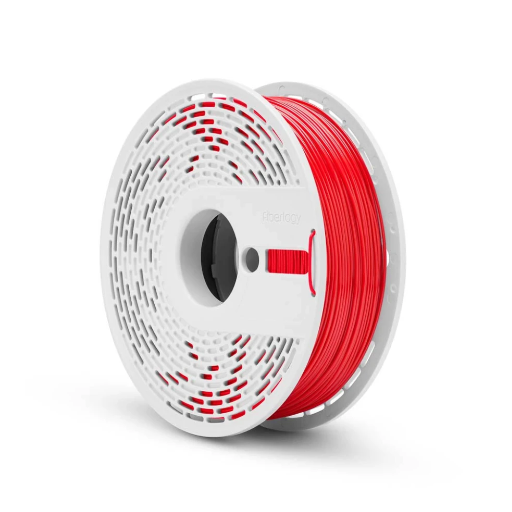
Properties of PLA:
- Biodegradability- PLA (Polylactic Acid) is obtained from renewable resources such as corn starch or sugarcane and can be fully biodegraded under industrial composting conditions.
- Thermal Properties- PLA does not really stand the heat like other thermoplastics with the glass transition temperature being somewhere around 55-60°C.
- Mechanical Strength- It is characterized by high tensile strength and rigidity; hence, it would be generally used whenever dimensional stability is needed.
- Processability: PLA is processed compatibly through 3D printing or injection molding, ensuring an efficient method for fabricating components.
Properties of Nylon:
- Durability: Nylon is an excellent material, being both durable and resilient. It also exhibits high wear resistance, making it suitable for high-performance applications and stress.
- Elasticity: It has been flexible and so resilient, and works well with applications that press nylon into operation.
- Thermal Resistance: It can withstand high temperatures over 200 °C fairly well, whereas variants like Nylon 6 and Nylon 66 are considered, as they have melting points higher than this.
- Moisture Absorption: Nylon rapidly absorbs moisture, which might alter its mechanical properties and should, therefor,e be conditioned for high-precision applications.
Durability Comparison
In high-demand applications for good material performance, nylon is consistently ranked highly for its wear resistance and tensile strength. For instance, Nylon 66 is more resistant to abrasion and thermally stable than the other grades; it will find use in designing components for gears and automotive applications. Under prolonged humidity conditions, however, the tensile strength reduces due to moisture absorption. And for polycarbonate, it has higher impact resistance and dimensional stability under wet conditions, but it performs poorly at high temperatures compared to nylon.
While more durable metals, such as stainless steel, are affected by mechanical stress, accounting for weight and cost as drawbacks over reinforced nylon composites, engineering plastics like PEEK surpass nylon in extreme environments in terms of chemical resistance and maintain strength at temperatures exceeding 250°C. This makes it evident that material selection should rank on an application’s quintessential needs as per its operational conditions to give an edge in performance.
Heat Resistance and Strength
Heat resistance and mechanical strength are crucial parameters to consider when evaluating materials under high demand. Advanced alloys and composite materials exhibit thermal stability at extremely high temperatures of up to 1,000°F (537°C). Nickel-based superalloys find widespread usage in aerospace and power generation due to their ability to withstand prolonged exposure to high temperatures, during which degradation occurs to a minimal extent. Ceramic matrix composites stand on their own as a lightweight solution offering strength where heat resistance and low thermal expansion are both required.
These advances follow adequate thermal testing and stress analysis, enabling the materials to withstand repetitive heating and cooling stress without fracturing or losing their functionality. Current research supports better solutions that also demonstrate that the later generation of polymers and thermoplastics is making the turf feasible for heat-intensive environments, with service temperature ratings beyond 300°F (149°C) and the retention of core mechanical properties. Such innovations will be instrumental in the performance enhancement of automotive, electronics, and renewable energy systems. Now, engineers can more definitely confront challenges arising from thermal and mechanical stresses through the disciplined application of design principles alongside cutting-edge material technology.
PLA vs Nylon: Key Differences

- Material Composition
Being biodegradable thermoplastic polymers, PLA is considered an environmentally friendly material. Lactic acid is derived from renewable resources such as corn starch or sugarcane, making it an environmentally friendly material. On the contrary, nylon is a synthetic polymer formed from petrochemicals and is popular for its durability and flexibility.
- Strength and Durability
Nylon offers higher tensile strength and superior durability than PLA, thus serving robust mechanical properties. PLA is more brittle and has less impact resistance, due to which it finds limited applications in high-stress settings.
- Temperature Resistance
Nylon offers high resistance to heat, allowing it to withstand elevated temperatures without deformation. On the other hand, PLA has a low melting point and tends to warp in heat-intensive settings or lose rigidity.
- Ease of Use
PLA is easy to print and requires lower extrusion temperatures; it is widely recognized for casual use and everyday projects. Though robust, Nylon is hard to print because of its high melting point and the possibility of moisture absorption while printing.
- Applications
While PLA is generally used for prototypes, arts, and decorations along with low-level stress applications, Nylon is useful for functional parts, gears, and industrial components because of its toughness and precise flexibility.
Compare Key Differences Between PLA And Nylon
|
Parameter |
PLA |
Nylon |
|---|---|---|
|
Strength |
Moderate, suitable for low-stress items |
High, ideal for functional parts |
|
Flexibility |
Low, relatively brittle |
High, resistant to bending and wear |
|
Printability |
Easy, low melting temperature |
Challenging, high melting temperature |
|
Moisture Sensitivity |
Low, requires minimal care |
High, absorbs moisture quickly |
|
Durability |
Moderate, suitable for short-term use |
Excellent, long-lasting material |
|
Cost |
Affordable, widely accessible |
Higher cost, suitable for advanced use |
|
Environmental Impact |
Biodegradable, eco-friendly |
Non-biodegradable, less sustainable |
|
Heat Resistance |
Low, deforms at higher temperatures |
High, withstands elevated heat |
|
Surface Finish |
Smooth, good for aesthetic projects |
Rougher, less refined without post-process |
|
Applications |
Prototypes, decorative items |
Industrial parts, gears, tools |
Performance in Impact Testing
When performing impact tests, the primary concern is the material’s performance in determining its suitability for various applications. Materials with higher ductility absorb energy during plastic deformation, thereby preventing sudden failure. For example, polymers such as high-impact polystyrene (HIPS) absorb energy to a greater extent by virtue of their molecular structures and hence are applied to making products that require toughness under stress. On the other hand, brittle materials like the classical PLA do not absorb energy to any great extent upon impact, which leads to failure under even lower levels of impact force, usually fracturing with no plastic deformation.
Newer composites with improved impact resistance offer yet another option. For instance, carbon fiber-reinforced polymers, which strike a perfect balance between lightweight and energy absorption, are currently utilized in highly demanding environments such as the aerospace and automotive sectors. Studies show that impact modifiers added to base plastics immensely increase their performance and provide the capability to withstand multidirectional stresses without losing structural integrity.
Environmental Considerations
While carbon-fiber-reinforced polymers offer a high level of energy absorption, thereby presenting an opportunity for environmental risk abatement, they also pose a set of challenges. Although lightweighting of vehicles and aircraft by these materials promotes energy efficiency, production routes of these materials are generally energy-intensive and demand a fair share of non-renewable resources. Besides that, recycling of the composites remains limited due to the difficulties in separating their constituent elements. Several emerging approaches, however, aim to enhance the end-of-life management via, e.g., advances in chemical recycling and closed-loop manufacturing ability. Studies show that incorporating bio-based fillers or resins in these materials can still impose lesser ecological impacts and so pave the way to even greener solutions in the future.
Applications in Industry
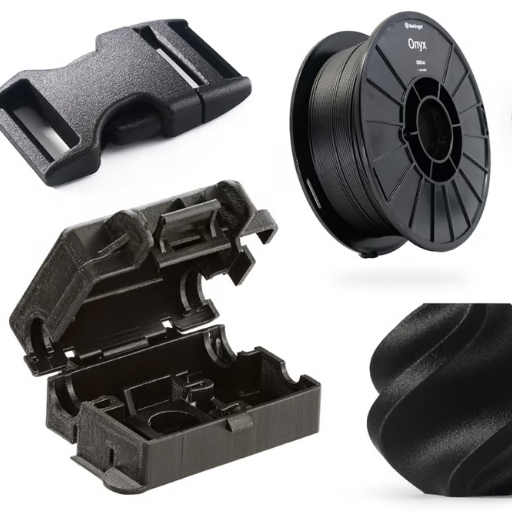
Composite materials, due to their higher strength-to-weight ratio, durability, and versatility, have found applications in a wide range of industries. The aerospace industry utilizes composites extensively in aircraft structures to maintain low weight while meeting the stringent performance standards required. The automotive industry, similarly, utilizes these materials in manufacturing lighter vehicles with improved fuel efficiency. Further in construction, composites find application in structural components, as they offer good corrosion resistance and extremely high tensile strength. The blades of renewable energy systems such as wind turbines are another application of composites since they benefit from being rigid and lightweight. These application cases clearly demonstrate that composites are indeed catalysts for technological development and enhancement of operational efficiency.
3D Printing with PLA vs Nylon
The widespread use of PLA provides it with numerous benefits and characteristics that cater to specific applications. PLA is a biodegradable thermoplastic synthesized from renewable resources like corn starch or sugarcane. It is very well-known for its ease of use and relatively lower print temperature (ranging from 190°C to 220°C, with some variations), as well as minimal warping. Its usage is ideal for beginners and for producing detailed, good-looking models. It emits very few fumes, making the printing process healthier.
When comparing the two materials, PLA is ideal when designing aesthetic projects, and Nylon offers applications that require strength and resilience. Selection, based on a mixture of values strength, environment, and printing, would largely depend on the requirements of an individual project.
Manufacturing Uses of Nylon Filament
In the past, Nylon filaments have been widely used in various manufacturing sectors, thanks to their excellent mechanical properties and versatility. Having high tensile strength, impact resistance, and wear resistance, depending on the application, it has been chosen to produce functional prototypes, mechanical parts, and industrial jigs. Nylon finds applications in the manufacture of gears, brackets, bushings, and joints, where strength and durability are crucial. It is also used to make hinges and clips where motion is repeated because of its flexibility and resistance to abrasion.
Choosing the Right Material for Your Project
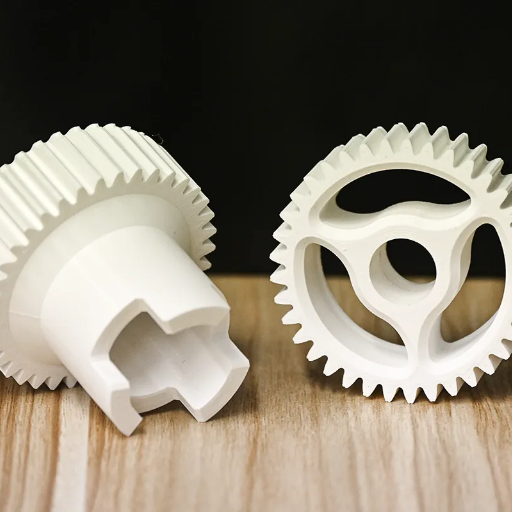
Choosing the right material to be used for your project basically boils down to the specific needs and operational considerations. First, some of these essential factors that you should analyze include the following:
- Mechanical Properties
Determine the aspects of strength, flexibility, and durability that the material must provide. For instance, nylon is used where the application requires impact resistance and abrasion resistance.
- Environmental Resistance
Take into account exposure to heat, moisture, or chemicals. Some nylons develop heat and chemical resistance that are suitable for hostile environments.
- Manufacturing Compatibility
The manufacturing method should also be taken into consideration. Nylon performs well with additive manufacturing and injection molding, which are relatively versatile processes.
- Cost and Availability
Each project must balance the budget against performance requirements—the performance requirements are basically determined by the equipment to be used. Some areas, such as motor vehicles or aerospace, favor nylons because they have a suitable balance of low price with performance and advanced characteristics.
Material selection, considering the required parameters, is based on technical specifications and project requirements, both of which are key deciding criteria.
Durability and Project Requirements
Durability is another crucial aspect when selecting materials for engineering and manufacturing applications. For example, nylon is made to resist wear and tear caused by repeated mechanical stresses. It is capable of taking such stresses for extended periods without much deformation or failure. Due to its tensile strength and ability to resist forceful fluctuations in temperature, it finds dominant applications as gears, bearings, and automotive components. Advanced polymeric science has recently improved nylon with respect to impact resistance and thermal stabilization, thereby allowing a diversified range of applications in industries. Furthermore, the resistance of nylon to chemicals, oil, and abrasion provides long-term reliability under harsh conditions. Evaluating durability metrics against project requirements such as loads applied in the working environment, environmental set of contingencies, and life expectancy will enable stakeholders to confirm whether their held view of durability would offer the realization of a product through its local history-life cycle.
Environmental Factors to Consider
Reference Sources
1. Effect of Changing Printing Parameters on Mechanical Properties of Printed PLA and Nylon 645:
- Key Findings:
- The study evaluated the impact of extrusion temperature, filament color, and infill rate on the mechanical properties of PLA and Nylon 645.
- Brown PLA exhibited the highest tensile strength among PLA variants.
- Higher infill rates significantly improved tensile and compressive strength for both materials.
- Extrusion temperature had minimal impact on strength.
- Key Findings:
- PLA gears demonstrated better dimensional accuracy compared to Nylon gears.
- Nylon gears had lower roundness and concentricity errors, attributed to their lower infill rates.
- PLA is recommended for applications requiring high dimensional precision, while Nylon is better for applications needing lower form errors.
- Key Findings:
- PLA exhibited superior mechanical properties compared to non-biodegradable materials like ABS and PC.
- PLA composites (e.g., PLA + 30% nylon glass fibers) showed enhanced thermal stability.
- PLA + PET-G blends offered a balance of mechanical strength and thermal properties.
Frequently Asked Questions (FAQs)
Q: What is the difference between PLA and Nylon in 3D printing?
A: PLA, or polylactic acid, is a biodegradable thermoplastic made from renewable resources like corn starch, whereas Nylon is a synthetic polymer known for its durability and flexibility. When comparing PLA vs Nylon, the primary difference lies in their material properties. PLA is easier to print with due to its low melting temperature and minimal warping, making it suitable for beginners. On the other hand, nylon offers greater tensile strength, toughness, and durability, making it ideal for functional parts. While using PLA is common for decorative prints, Nylon is preferred for applications that require high impact resistance and strength.
Q: How does the strength of Nylon compare to PLA?
A: The strength of Nylon is significantly greater than that of PLA, especially in terms of tensile strength and impact resistance. Nylon is known for its ability to withstand heavy loads and is often used in industrial applications, while PLA is more prone to brittleness under stress. When looking at ABS vs PLA vs Nylon, Nylon stands out with its improved durability and flexibility, making it suitable for parts that need to endure mechanical stress. Additionally, Nylon’s moisture absorption properties can enhance its strength but may complicate the printing process if not managed properly. Therefore, for applications where strength is a priority, Nylon is generally the preferred choice.
Q: Can you use Nylon filament for 3D printed parts?
A: Yes, you can use Nylon filament for 3D printed parts, and it is highly recommended for applications requiring toughness and durability. Unlike PLA, which is more suitable for aesthetic prints, Nylon is ideal for functional components due to its strength and flexibility. However, printing with Nylon requires careful attention to print settings, such as maintaining a heated print bed and controlling humidity to prevent moisture absorption. It’s also worth noting that Nylon filaments are available in various types, including those blended with materials like Onyx for enhanced properties. For those considering the development of 3D printed parts that need to endure wear and tear, Nylon is an excellent choice.
Q: How do PLA and ABS compare to Nylon in terms of printability?
A: When comparing printability, PLA is often the easiest material to work with, followed by ABS, and then Nylon. PLA’s low melting temperature and minimal warping make it a favorite among beginner users of desktop 3D printers. ABS, while more challenging due to its tendency to warp and require a heated enclosure, still offers better printability than Nylon. Nylon can be more complex due to its moisture sensitivity and the need for precise print settings, which can influence adhesion and layer bonding. Therefore, for novice users, PLA is the right filament, while experienced users may prefer Nylon for its superior material properties in functional applications.
Q: What are the advantages of using Nylon for 3D printing?
A: Nylon offers several advantages for 3D printing, particularly in terms of strength and flexibility. Its toughness and durability make it suitable for high-impact applications, while its ability to absorb moisture can enhance the strength of printed parts. Nylon’s tensile strength is typically higher than that of both PLA and ABS, making it a preferred choice for engineering and industrial applications. Moreover, when considering Nylon and Onyx, users can achieve even greater performance due to the composite material properties. Although it requires careful handling and print settings, the benefits of using Nylon for functional parts often outweigh the challenges, especially in demanding environments.







